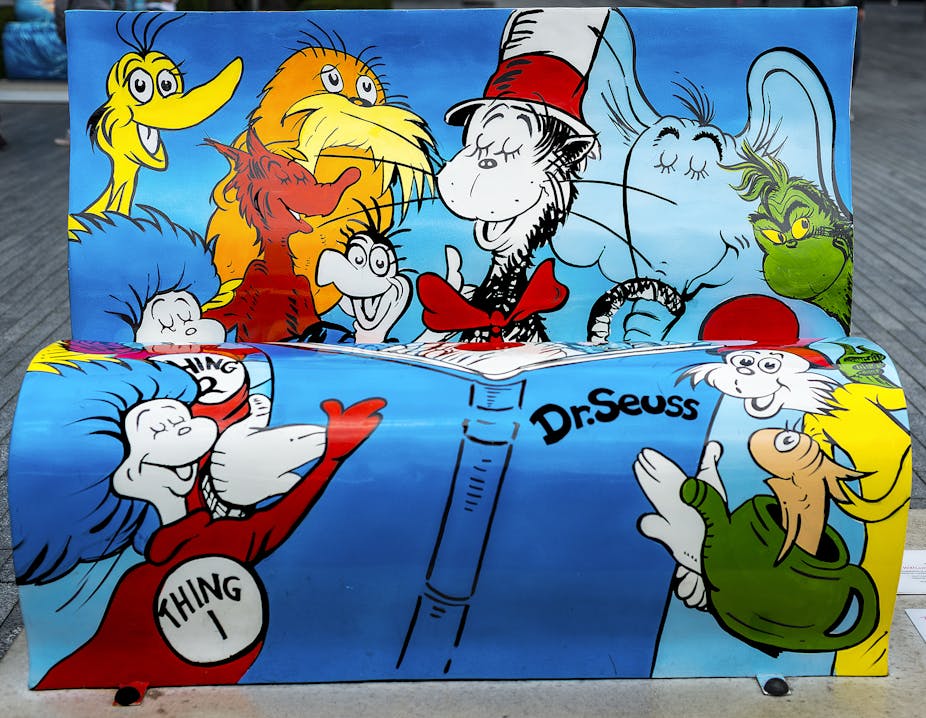Fans of children’s author Dr Seuss – the pen name of Theodor Seuss Geisel – were excited to learn that a new book is on the way. Titled What Pet Should I Get?, the book will be released in July and will feature the same brother and sister pair as his 1960 classic One Fish Two Fish Red Fish Blue Fish. This time the children are deciding on a pet based on its looks.

More than 20 years after Dr. Seuss’s death in 1991, a box filled with text and sketches was discovered in 2013 when his widow, Audrey Geisel, was cleaning out his office. Cathy Goldsmith, Seuss’s former art director, believes that What Pet Should I Get? was written between 1958 and 1962.
Seuss was a successful author and illustrator, founding the immediately profitable Beginner Books division of Random House in 1958. By the time of his death, “Dr. Seuss” was a multimillion-dollar industry, its interests protected by Dr Seuss Enterprises, a corporation established in 1958 and now headed up by Audrey Geisel. His last publication was Oh, The Places You’ll Go in 1990.
Although Seuss profited from mass culture, he did not endorse all its values. The Lorax (made into a film in 2012) is about environmental conservation. How the Grinch Stole Christmas (with an animated versions in 1966 and a live-action version starring Jim Carrey in 2000) rejects the consumerism of Christmas.
Yet not all of Seuss’s books carry an overt moral or message. Seuss’s first published children’s book, To Think That I Saw It on Mulberry Street, was rejected by 27 publishers because, they believed, it contained nothing that would help to transform children into good citizens. Vanguard Press finally published it in 1937.
So what is it about Seuss’s books that make them so popular? Seuss’s Beginner Books were a welcome antidote to the world of Dick and Jane, graded readers popular in the United States between 1930 and 1970 that featured simple stories about siblings living in suburban America.

In contrast, Seuss’s books focused on the imagination. Those green eggs and ham could be eaten anywhere: in a box or with a fox, in a house or with a mouse, in a boat or with a goat. The Cat in the Hat was “a little volume of absurdity” that used a limited number of words and blended them with pictures to encourage children to read on their own.
Some of the enthusiasm for this latest book is undoubtedly nostalgic, as parents and grandparents remember with fondness their own reading experiences with Dr. Seuss. This nostalgia will translate into healthy profits for Random House, the publishers of Seuss’s children’s books. Random’s lavish “Seussville” website describes What Pet Should I Get? as “the literary equivalent of buried treasure”.
Not everyone is equally enthusiastic.
In his blog for the Washington Post, Ron Charles links the “new” Dr. Seuss book to Harper Lee’s forthcoming novel, Go Set a Watchman, using Seussian rhymes and rhythms to express his ambivalence about the publication of a story that Seuss set aside more than five decades ago:
I do not want his yellowed notes.
I have enough of what he wrotes!

By drawing upon Dr. Seuss’s verse style to make his point, Ron Charles follows a well-worn path in American literary, cultural and political commentary.
Philip Nel, one of Seuss’s biographers, points out that Seuss’s writing and characters have been appropriated by writers on all sides of the political spectrum, from Robert Coover’s 1968 satirical novella A Political Fable, in which the Cat in the Hat stands for president, to Rob Suggs’s attack on Osama bin Laden as a Grinch-like figure.
The subtitle of Nel’s biography is American Icon, an expression which captures a crucial aspect of Dr. Seuss’s impact on child audiences. His books and their spin-offs are consumed globally but it is in the United States that they are most durably a part of children’s reading experience. Nel says that one in four of all American children receives a Dr. Seuss title as his or her first book.
Seuss’s prominent position in the US market is unlikely to hold true outside the United States. In Australia, for instance, it is a safe bet that many more babies and young children receive copies of Mem Fox’s Possum Magic than one of Dr. Seuss’s books, while it is Norman Lindsay’s The Magic Pudding which most often crops up in political commentary, especially in discussions of the budget which refer to “Magic Pudding economics”.

Beatrix Potter memorably described the charm of Seuss’s books for children:
The swing and merriment of the pictures and the natural truthful simplicity of the untruthfulness.
Children around the world continue to delight in Seuss’s distinctive story-telling. But the significance of the new manuscript will be most deeply experienced in the American market, where since the late 1950s Dr Seuss’s books have consistently appeared in best-seller lists and where he remains the most popular children’s author. Or perhaps the most popular author for adults to buy for children.

